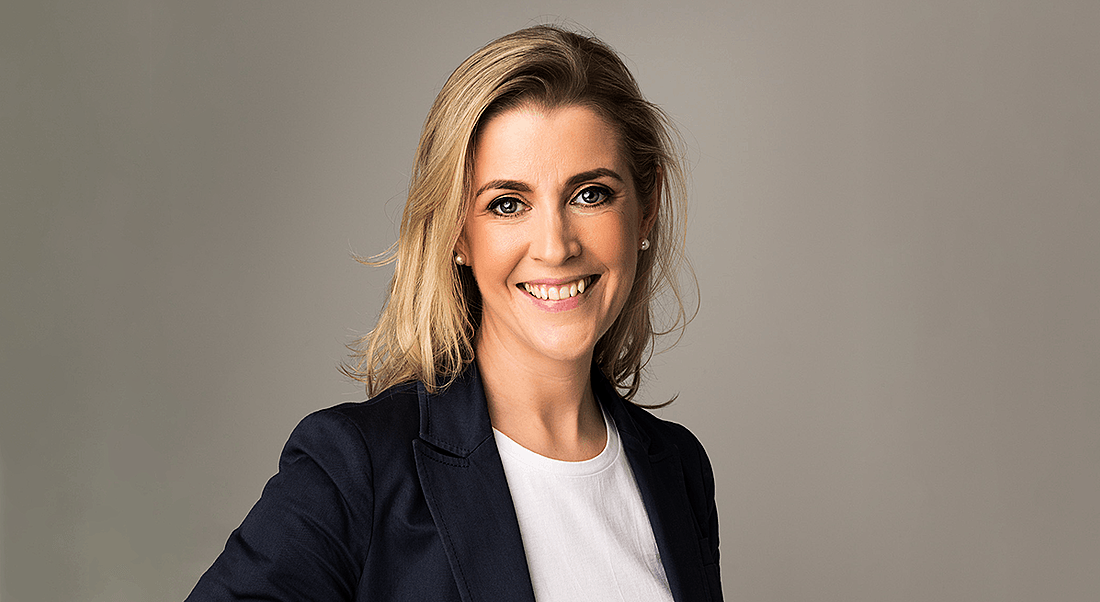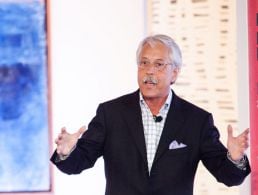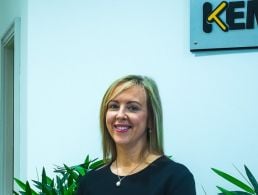The workforce is more excited to embrace new technologies than leaders think, according to Accenture’s Tara Levins.
The future of work is no longer on the way – it has already arrived. Many new technologies have already started entering the workplace, and the way we work is changing as we speak.
However, there are still many more trends to come over the horizon, and leaders and employers need to be ready and agile enough to embrace them.
Tara Levins is the future workforce lead at Accenture in Ireland, and she is acutely aware of what changes are on the way and how they will affect the workplace, both for employers and their employees. Here, she shares her views on what trends we can expect for the future of work.
Tell us about the role of a future workforce lead and how you keep your finger on the pulse of upcoming workforce trends.
In Accenture, we have access to large teams of global researchers who are always looking at this topic to spot the newest trends around the world. I spend time working with these teams to understand their analysis, while always maintaining an external perspective.
Day to day, I spend time talking to our clients in Ireland to understand the workforce challenges they are facing and how they might go about solving for them. I also always keep in mind the history and evolution of human behaviour. The past often provides clues of how we as humans will react to the changes in the world of work. It is important to recognise that the world of work has always been changing and will always continue to do so.
How would you summarise how the workforce has changed in the past 10 or even five years?
In the past 10 years, there have been many drivers of change in the workforce. Millennials’ approach to work has been driving more openness, more honesty and a quest for purposeful work. Leaders in organisations have had no choice but to respond to this quest in order to retain talent at all levels.
Connectivity and technology have enabled people to have more flexibility in where and when they do their work, moving beyond the idea of a nine-to-five, brick-and-mortar setting. For many organisations, this has meant a shift away from ‘presenteeism’ and a move towards ‘outcomes’ in work.
The workforce is also demanding more lifestyle flexibility, as well as day-to-day flexibility. As people have longer working lives ahead of them, there is a need for employers to be flexible in allowing people extended periods of time off – for travel, for caring for children or elderly parents, and many other reasons.
What steps have you taken in Accenture to ensure its workforce is adapting to change such as this?
To build a workforce of the future, we work hard in every area of the business to ensure our people have a sense of purpose and an understanding of where they are helping. Everyone has their own unique skills and experiences, which, when combined, maximise the contribution to our clients and our business.
We have adapted our consulting approach, incorporating new agile methodologies and design-thinking processes that put the end user and the customer at the heart of everything we do for our clients. It is also a much more fun and engaging way to work!
We are very flexible with giving people leaves of absence for many reasons, including to travel or spend time with family. After two years in the company, a graduate can apply for this benefit, which can be very attractive for those who perhaps didn’t get a chance to travel between university and work.
As the demand for talent in the marketplace is so high, we have also thought about new channels to attract people. One very successful programme for us has been the ReSUME programme. This is a returnship programme for people who have been out of the workplace for two or more years. Following a three-month internship, returners are eligible to apply for open positions at Accenture. This has been really positive for the candidates – in particular, we have had positive feedback from women who have taken time off to be at home with a young family and want to get back into the workplace.
It has also been a fantastic talent discovery for us at Accenture. More organisations need to think about the untapped talent that is out there, and how to make their organisations flexible and open to such talent.
Is it more of a challenge for a large multinational corporation to manage workforce disruption? How does Accenture implement organisation-wide change?
Workforce disruption is a challenge for all organisations, regardless of size. In some ways it can be easier for a large organisation to adapt. For small- and medium-sized businesses, having to release people on maternity leave, paternity leave or for a leave of absence can be extremely disruptive.
In our global operations business, for example, we have teams who are implementing an ‘adaptive workforce’, which can respond easily to change and is available on demand. This involves creating ‘talent pools’, which enable talent to move fluidly based on need and skills, and reorganise quickly when change is needed.
What key shifts and trends do you see shaping the workforce as soon as next year?
One of the key technology trends that our clients are excited about is introducing automation and artificial intelligence. They are excited because it brings the opportunity to free up their people to do more valuable and meaningful work. The workforce is more ready and more excited to embrace new technologies than their leaders think. Our research points to it – 67pc of 14,000 workers we interviewed globally are excited to learn new skills in order to work with new technologies in the next three years. However, only 3pc of leaders have a plan to significantly increase investment in training to use these technologies.
As well as investing in the technology, organisations need to invest in their people to enable them to work with new technology.
Looking ahead in the longer term, how can an organisation future-proof their workforce?
Having a robust talent strategy is key. Organisations need to look at the types of people they are hiring, and ensure they are going to be strong communicators, good at collaborating, agile, and nimble in the way they work, as their roles may change many times during a career. With more and more automation and artificial intelligence in the workplace, the soft skills of today are becoming the hard skills of tomorrow.
Organisations also need to think about the sources of talent. We often talk to clients about the four Bs: build, buy, borrow and bot. Build is the investment in the talent you already have. Buy is getting new people in from the external market. Borrow is getting people on a more fluid or project basis. Bot is understanding the role that robotics, automation and artificial intelligence can play.




